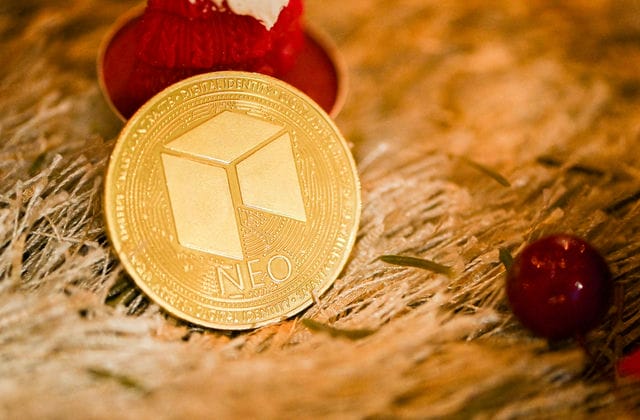Stellar-XLM is a competing coin that split from Ripple (XRP) in 2014 and has a faster transaction speed of 2-5 seconds/pen than Ripple. In addition, Stellar-XLM is non-profit and completely open source, unlike the "pseudo-centralized" Ripple. This means that Stellar- XLM is more malleable and cheaper to trade than the latter. As a result, Stellar-XLM has jumped from 35th place in January 2017 to 7th place in the global market capitalization rankings, while Ripple is on the rise! The rate of rise is much faster than Ripple.
Who is suitable to trade in Stellar-XLM?
1, Cryptocurrency lovers: As the world's largest digital cryptocurrency to one, keen traders can add Stellar-XLM to their portfolio to diversify their investment risk.
2, Ripple traders: As Stellar-XLM has the same roots as Ripple and improves on it. So traders who are keen to trade Ripple may wish to include it in their portfolios to diversify their risk.
3, Intraday traders: Like other cryptocurrencies, Stellar-XLM has extremely high intra-day volatility. Therefore, it is also suitable for traders who wish to buy and sell within a day to make a profit.
4, Technology believers: Stellar-XLM is also an idealistic digital asset. This is because its original purpose was to alleviate poverty and provide a financial solution for those in society who do not have access to banking services. Investors who believe in "technology for a better world" may buy its token XLM to help Stellar realize its dream.

What are the factors affecting the movement of Stellar-XLM?
2017 was undoubtedly the year that digital cryptocurrencies exploded end masse. However, Stellar-XLM has quickly emerged from the pack, with its market cap soaring to the $1 billion mark. In addition to the overall trend of digital cryptocurrencies, the price of its token, XLM, has been influenced by a number of factors. For example, its competitor Ripple and the quality of financial services. To summaries.
1, Bitcoin: There is no doubt that Bitcoin influences the overall trend of digital cryptocurrencies by virtue of its large market capitalization in the global cryptocurrency universe. If Bitcoin rises, other cryptocurrencies usually follow; conversely, if Bitcoin's market turns down, it also drags down the performance of other cryptocurrencies, including Stellar-XLM.
2, Ripple: Because Stellar-XLM operates with a similar underlying protocol to Ripple, some investors may see the two as interconnected. Therefore, any fluctuation in the price of one token will affect the other.
3, Mainstream applications: Stellar-XLM's protocol can be used for different financial applications. Therefore, whenever a well-known company announces the adoption of this protocol, it increases investor confidence in it and drives up the price of its token, XLM.
4, Social impact: One of the key agendas of Stellar-XLM is to help the poor access financial services. Therefore, the organization’s success lies not only in financial gains, but also in other breakthroughs, such as advancing social change to achieve results.
Stellar-XLM's Financial Encyclopedia
The Stellar-XLM protocol uses XLM as a bridge currency, just as Ripple Lab uses Ripple as a transit. The bridge currency, XLM, allows for faster and cheaper transfers and exchanges of multiple currencies and digital cryptocurrencies. Specifically, financial institutions in the Stellar-XLM protocol share a financial access agreement and automatically position the best bid for each transaction. The parent company of Stellar-XLM takes a fee of no more than 1% of the transaction price, but must be paid in XLM.
The convenience and low cost of cross-border and interbank currency transfer services have attracted the attention of many technology and financial giants who are looking to establish partnerships. For example, IBM has chosen Stellar-XLM as its platform for providing cross-border payment solutions. The solution aims to significantly reduce the time taken to transfer funds across borders and has already attracted the attention of some of the largest financial institutions.
History of Stellar-XLM
Stellar-XLM was founded in 2014 and is supported by the non-profit organization Stellar Development Foundation. Its founders are well known in the tech world. Co-founder Jed McCaleb is the founder of the popular P2P file sharing solution eDonkey, while Joyce Kim is an experienced venture capitalist.
In 2015, Stellar-XLM underwent a complete overhaul, changing the underlying code and creating a new, consistent server-based consensus algorithm for transaction approval. Each server in the network approves transactions in 2-5 seconds, with each change recorded in a distributed ledger and updated at the same price. This ensures short transaction times and allows for real-time tracking of the holders of each XLM token.
Like other digital cryptocurrencies, Stellar-XLM has had a remarkable 2017, with a huge price increase and a market cap in the billions of dollars, placing it among the top 10 cryptocurrencies.
So, it is using blockchain and the numbers to benefit human society.
In the fast-growing multi-billion-dollar cryptocurrency space, Stellar-XLM is somewhat of an alternative. It shares many similarities with blockchain ventures such as Ripple Labs and Ether, but it is not for profit and is actively pushing for community change. The combination of its expanding capital, effective transfer technology and prestigious partners suggests that its growth prospects are unlimited.

Another major impact of the digital cryptocurrency revolution has been to cast a spotlight on blockchain technology. While the financial world has always been interested in digital cryptocurrencies, the tech world is obsessed with developing other uses for blockchain, and Ripple Labs, Ether and Little Ant coin are all working on different applications using blockchain, hence the rising value of their digital cryptocurrencies. Stellar-XLM is one of those companies that has more to offer than just investment options, so it could still go far in the coming years.





























